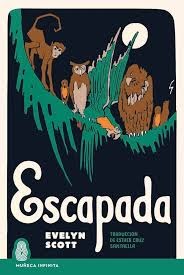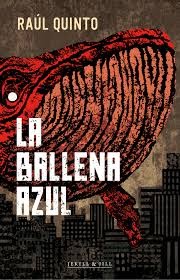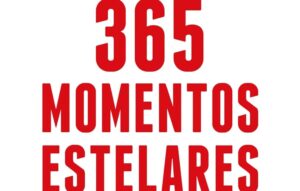
Original title: Escapade
Year of publication: 1923
Translation: Esther Cruz Santaella
Valuation: Recommended (see last paragraph)
If this were one of those Sunday naptime TV movies, we would have an XXL size BASED ON REAL STORIES. Because Escape It is something like the diary of the two or so years that Evelyn Scott spent in Brazil with her lover. And I say “something like” because although the text is not strictly in the form of a diary, with its dated entries and so on, there is a clear exercise in remembrance. Furthermore, although the names of the protagonists appear changed, the route and episodes narrated were also narrated by the male part of the story.
If this were one of those Sunday naptime TV movies, we would have a full-on drama. There are plenty of ingredients: almost extreme poverty, impossibility of leaving the country due to the First World War, maneuvers by his ex-wife, gossip, etc.
If this were one of those Sunday naptime TV movies, we would have a self-pitying and sentimental text that would have to be read with a pack of Kleenex and a basin, because of the liters of tears they would try to make us shed.
Luckily, this IS NOT ONE OF THOSE SUNDAY NAP TIME TV FILMs, nor is it anything like it. Escape It is the fictionalized autobiography of a very specific period in the author’s life, the story of a fragmentary and derived consciousness, the chronicle of a defeat, of a life stuck between hostility, emptiness, resignation and hope.
I have been accustomed to thinking of suffering as something that beautifies and ennobles. Now I recognize it as something that distorts, that makes people horrible.
If I had to define the novel, I would say that we are facing an “existentialist impressionism.” Because the gaze is directed outwards, towards exuberant and/or desolate landscapes that are nothing more than the backdrop of the currents that stir the soul of the narrator and protagonist: emptiness, anxiety, fears, hopes… life and death intertwined. Here there is hardly any space for an “anthropological” view, nor is there any space for “pure” action.
Escape It is, on the contrary, a space saturated with light and color but surrounded by invisible walls, a text in which descriptions and images stand out, as well as their relationship with the interior landscape.
On the less good side is the final chapter, completely different from the rest of the book in tone and style. We can conjecture about its meaning in the work (final liberation? Change of course?), but it breaks so much with the above that I think it could even have been ignored.
Source: https://unlibroaldia.blogspot.com/2024/04/evelyn-scott-escapada.html


